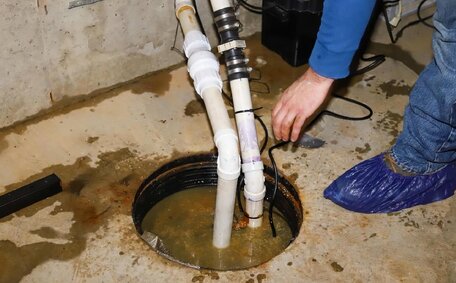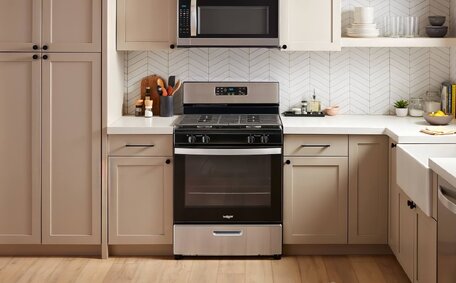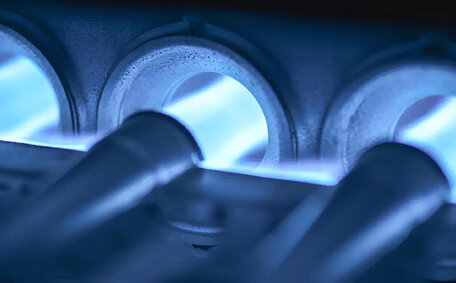Understanding Plumbing Systems in Multi-Storey Buildings
Plumbing systems in multi-storey buildings are inherently more complex than those in single dwellings, due to the need for vertical water and wastewater transport. These intricate systems rely on stacks, supply pipes, and drainage lines to serve every floor’s common property.
The key components include:
- Water supply conduits and mains are responsible for channelling pressurised clean water to various plumbing fixtures from the municipal supply or on-location reservoirs.
- Soil stacks and conduits serve the purpose of expediting the building’s plumbing and sanitary drainage system, effectively whisking away sewage and greywater.
- Vent stacks are integral elements of plumbing drainage systems, and they regulate air pressure to prevent siphonage.
Apartment plumbing, with its extensive branch lines, commonly uses cast iron piping due to its durability and resilience in high-usage scenarios, unlike the PVC or copper more typical in residential homes. Cast iron’s robustness is more suitable for high-rise applications, fitting both commercial residential plumbing needs by enduring intense use and fluctuations in pressure with ease.
Managing consistent water pressure and operating efficient drainage systems for wastewater from the floor above presents much bigger challenges in the real estate of multi-storey buildings. Plumbing issues in each unit can often impact other residences adjacent in the building.
To address the intricacies of the system, commercial plumbers with expertise in comprehensive services are essential to ensure installations, preservation, and repairs are conducted efficiently. The body corporate and the building manager must implement ongoing plumbing maintenance to prevent problems from arising.
Vertical Stacks for Efficient Water Transport
Understanding how plumbing works within your system is crucial for vertical water and waste transfer needs through the floors in towering edifices. Proper installation and maintenance ensure all your vertical stacks and horizontal pipes function efficiently for peak system performance.
Water supply columns channel where your water comes from, delivering pressurised fluid from the municipal water supply, ensuring warm water consistency to receptacles on every level. Subsequently, the supply extends through horizontal underground conduits, delivering clean water to clean water fixtures and machinery within each compartment. Employing a design that ensures the plumbing system works to assist moving water skyward initially guarantees preserved pressure for the top storeys.
Soil columns, along with vent risers, serve as waste stacks that harness gravity to whisk away greywater and sewage from each level. Vent stacks help regulate air pressure within soil stacks to prevent gurgling or slow drainage. Drain pipes and fixtures like soil stacks can get clogged easily from items such as grease or tree roots, necessitating professional drain clearing.
Any damage, misalignment or leaks in plumbing pipes, particularly the vertical stack, suggests what can affect multiple floors, necessitating expert plumbing services. To establish proper water flow and avoid additional harm, our team of specialists should systematically assess each conjunction, sealant, and conduit support throughout plumbing work, maintenance repairs or restorations.
Maintaining Water Pressure Across Floors
Maintaining consistent water pressure across all floors is vital in a commercial plumbing system of a multi-storey commercial building, and plumbing professionals are tasked with designing to achieve this. Owing to gravity’s pull, upper storeys experience a dip in pressure, unlike the ground floor where water makes its initial ascent. Solutions to counteract this pressure loss include:
- Installing efficient booster pumps and integrating roof tanks to redress water pressure distribution through reliable iron piping systems.
- Using roof gravity tanks and control valves to regulate pressure rather than allowing unchecked changes to disrupt service.
- Strategically placing water heaters and separate hot water services on various floors helps supply water at the right temperature to address discrepancies.
- Fitting pressure limiting valves where necessary to prevent excessive pressure build-ups.
Vigilant scrutiny of building pressure and annual stream exams are key to quickly pinpoint any plumbing problem. Should there be complaints about low pressure, drips, or inefficiencies in sewer lines or other plumbing systems, our team takes responsibility for promptly investigating and working to rectify any of these issues.
Common Plumbing Issues in High-Rises
The complex nature of plumbing in high-rise buildings, managing the flow of liquids and waste across multiple levels, frequently results in common plumbing issues. Among the most frequently encountered complications are:
- Low water pressure on upper floors caused by distance from supply lines and restrictions in vertical stacks.
- The risk of a leaking pipe increases with immense water pressure and corrosion over time, necessitating vigilant monitoring.
- Factors that can lead to clogged drains or sewer leaks include collective usage and the accumulation of blockage-inducing items such as hair and grease.
- Burst pipes or water damage to walls/floors due to leaks spreading extensively.
Such plumbing problems may originate from a single flat but can rapidly affect many dwelling units, indicative of the projects throughout an entire apartment building. Timely identification and repair of any plumbing issue by qualified plumbers is crucial to limit disruption and costs across the building.
For our client’s peace of mind, regular system inspections, pipe condition assessments, and clear communication using an email address or other contact methods, should be coordinated with plumbers and building managers.
Clogged Drains
In most cases, clogged pipes present much more frequently in towering buildings, attributable to the higher concentration of residents and extensive utilisation of the plumbing network. The accumulation of items down the sink, like food scraps, hair, and soap scum, can gradually lead to stubborn blockages in the drain.
Educating residents in multi-storey buildings about their impact on plumbing systems is crucial for preventing blockages, particularly regarding clogged toilets. Building custodians should schedule regular inspections and engage plumbers equipped with hydro jets to address persistent blockages in drains.
Should a blockage arise, a proficient plumbing company with years experience wields specialised devices such as electric drain snakes, and pressurised water ejectors to dislodge obstructions with minimal detriment. Licensed plumbers can also use chemical drain cleaners if appropriate for their work.
Repairing even a small section of a central drain line in a multi-storey building necessitates adherence to rigorous standards and the expertise of skilled professionals. Synchronising with property administrators within working hours allows plumbers to gain entry, curb leakages, and systematically eliminate obstructions, such as plant roots or lipid accumulations, prior to assessing the water circuits.
Leaking Pipes
Securing building insurance is vital, as leaking pipes that are left unchecked can lead to significant water damage, defying stringent maintenance standards. Dripping water can soak internal walls, ceilings and flooring, potentially requiring major repairs.
Signs of a leak include:
- Visible water stains on walls or ceilings
- Musty damp smells
- Peeling paint or plaster
- Creaking floorboards
- Higher than normal water bills
Upon receiving a report of a suspected leak, it is essential to promptly inform the building management and engage licensed plumbers. Isolate the affected area by turning off the water supply and arrange for a qualified plumber to inspect the issue.
Highly trained professionals from a reliable plumbing service have the expertise to locate pipe leaks and resolve them promptly. Such strategy diminishes the chance of havoc from water coming leaking, preventing extensive spoilage and disturbance for occupants.
Scheduling regular plumbing preventative assessments at least once a year is essential to provide water system reliability and for the early identification of rusting, fissures, or mismatches in joints. This helps avoid catastrophic pipe failures in the future.
Low Water Pressure
There are several potential causes of low water pressure in an apartment building:
- Old galvanised pipes or mineral deposits restricting flow
- Undersized supply pipes unable to meet demand
- Malfunctioning water pumps or booster systems
- Partially blocked pipes or water filters
Initially, ascertain whether the low water pressure issue is confined to your home or shared by other residents. This helps determine if the problem is isolated or building-wide.
Examine for leaks, test taps, and observe if pressure diminishes when several fixtures are in use. Monitor pressure fluctuations, as they may reduce during times of high demand.
If it’s a system-wide issue, contact building maintenance with specifics of the affected plumbing equipment for a professional evaluation. A skilled commercial plumber is prepared to investigate and devise solutions for any specific plumbing challenges.
Improving water infrastructure and adopting plumbing systems use advanced booster pumps may be necessary long-term fixes in ageing highrise buildings to maintain adequate pressure for all occupants.
Preventative Maintenance Strategies
Preventative maintenance is crucial to address potential issues and ensure optimal performance of plumbing systems in multi-storey buildings. This involves proactively identifying problems before they arise or worsen.
Recommended strategies include:
- Conducting annual video drain inspections to check for cracks, leaks, blockages or root ingress.
- Testing water pressure and flow rates across different floors annually to ensure adequacy.
- Inspecting exposed pipework yearly for corrosion and replacing brackets or supports as needed.
- Checking pH levels and water quality to prevent internal corrosion of pipes.
- Inspections of risers at intervals of every two three years via camera tools enable systematic fault detection.
- Cleaning out roof storage tanks and checking valves biannually.
- Reviewing drainage plans and as-installed plumbing diagrams yearly.
Being proactive reduces leaks, clogs and pressure issues over time. It prolongs the system’s longevity more than simple fixes, enabling timely enhancements before complications amplify. This prevents major disruption to residents.
Innovative pipe relining allows deteriorated drainage pipes to be restored without breaking concrete or substantial demolition. Epoxy coatings are applied internally after scoping the pipes.
Strata plumbing maintenance demands ongoing cooperation among qualified plumbers, building owners, and proactive strata managers.
Innovations in High-Rise Plumbing
Technological advancements provide new solutions for managing complex plumbing systems in multi-storey buildings. Smart monitoring systems can now remotely track natural gas, water usage, pressure, and temperature in real-time. Any irregularities automatically trigger alerts to quickly identify and locate leaks or blockages.
Thermostat-enhanced mixing valve mechanisms, in conjunction with recirculation of heated H2O infrastructures, aid in the immediate provision of moderated aqua to all plumbing adjuncts, concurrently reducing power expenditures. Motion-sensor taps and dual-flush toilets enhance water conservation efforts in commercial buildings.
Trenchless pipe relining allows non-destructive restoration of leaking or corroded underground lines by applying epoxy coatings internally after scoping the lines. This negates breaking concrete or walls to replace pipes.
Backflow prevention devices, pressure regulating valves and stormwater recycling systems further enhance efficiency. Plumbers must stay abreast of such advancements when servicing high-rise developments.
Implementing systems like hydropneumatic storage technologies requires extensive technical know-how and saves long-term costs through proactive monitoring and early issue detection. To meet plumbing needs effectively, owners corporations should factor smart plumbing investments into their capital works budgets.






